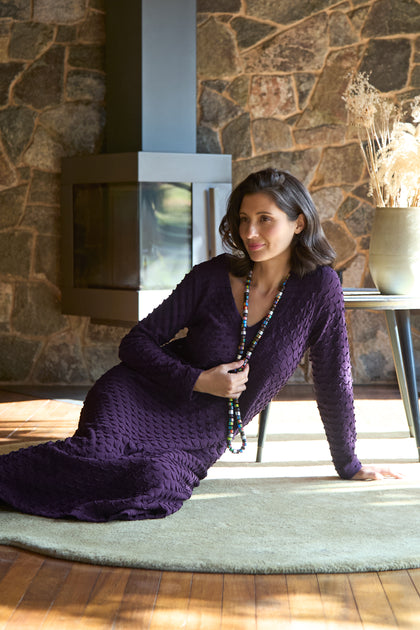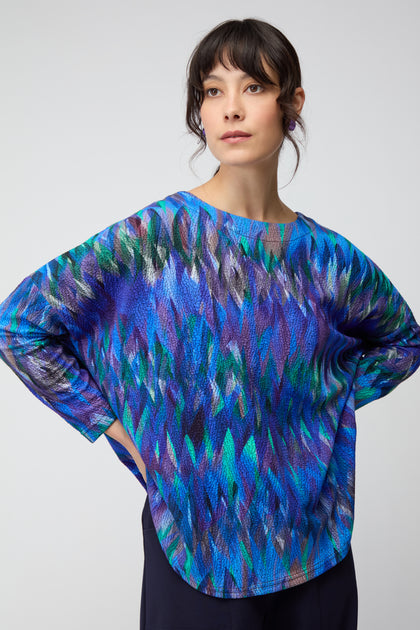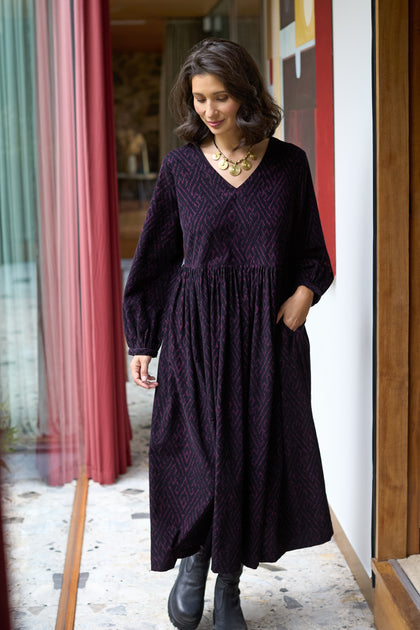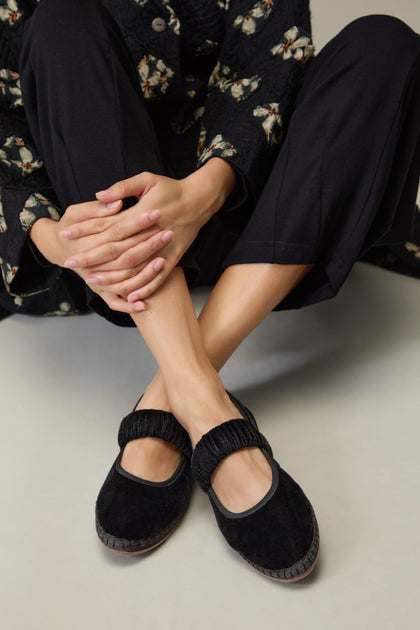Botanical Block Printing with Rosanna Morris
Article By Sahara .
May 24, 2024
In her inspiring new book "Botanical Block Printing", Rosanna Morris invites you to capture the beauty of the botanical world through a tactile and rewarding craft. An ideal outlet for nature lovers and creatives alike, this beautifully presented guide unlocks the secrets of botanical block printing, a technique that allows you to transform leaves, flowers, and other natural wonders into stunning prints on paper and fabric.
Filled with Rosanna's signature gentle aesthetic and rich photography, "Botanical Block Printing" is more than just a how-to manual – it's a gateway to a mindful and creative practice deeply connected to the natural world. Dive deep into our interview with Rosanna, where she reveals her sources of inspiration, shares practical tips, and guides you on your journey to becoming a botanical block printing artist.
-

What inspired you to delve into the world of botanical block printing, and how does the natural world continue to inspire and shape your creative process today?
I’ve worked in the realm of print for over 15 years and in that time, botanical themes just kept re-appearing in my work. I think a childhood spent on a council estate with only a balcony for outside space left me always curious about nature. It was always something I was seeking out, from the flowers in the playground to collecting leaves in the park, my earliest memories are a fascination with all that was green and growing. Today my days revolve around walks in my local forest and work in my own garden or allotment and naturally my work follows my mind and revolves around these themes.
Can you share a memorable moment or experience that sparked your passion for relief printmaking?
I think for me when the magic of print first revealed itself, was on a trip to Paris when I was 18. I remember being on the street and witnessing large linocut prints that had been printed onto thin paper and then pasted up onto urban walls. Much like graffiti these wheat pasted images were interacting with their environment on the ground and I realised for the first time the potential the medium held to be impactful, immediate and bold outside of the confines of a gallery or classroom.
What motivated you to create a guide to botanical block printing?
I've taught printmaking for years now and seen first hand how having a theme to work with can really allow people to explore new techniques without the fear of having to create something totally unique and with meaning on the first go. Botanical forms can be so simple, they are so universal and at the same time so inspiring, it felt like as a subject matter it would give people to try without pressure.
How has your printmaking style evolved since you first started, and how does it reflect the techniques shared in the book?
I think in my own personal style I am always striving for simplicity. I’ve realised over the years that my own image making is at its best when paired back, refined and bold. Its only through years of trying lots of different techniques that I’ve come to this conclusion however, so in the book I also tried to cover lots of bases, to show lots of different print approaches, so others can also explore mediums and techniques to help them find their own individual style.
Can you highlight a material or technique in the book that you find particularly exciting or innovative?
For me the most exciting chapter in the book is the last where I go through how to make earth pigments. Earth pigments are a big part of my practise now, I love the quality of the inks and that direct interaction between place, nature and subject that can come from, making and processing your own pigments. There are a couple of books on the market that explore this, but to my knowledge mine is the first to combine the earth pigments with relief print.

Creating clear instructions for such a visual and tactile activity must have been a challenging process. What difficulties did you face in selecting and presenting the various materials and techniques covered in the book?
I’m incredibly dyslexic and I had also just had my third baby when I began writing this book, so in general I had to be really disciplined with my time in order to make my way through all the steps in the book. I found filming myself as I did each task and watching it back really helped me to truly understand what I did in the studio when I was making, I also had some hugely supportive friends that I bounced chapters back and forth to as I worked through each section.
Among the projects featured in the book, do you have a personal favourite or one that holds a special significance to you?
I think as I mentioned above the earth pigment chapter is really connected to where I am with my own work at the moment. The other chapter that stands out is the chapter based on the importance of drawing as part of your practice, I detail tricks I use to get my drawing flowing and generally go over the importance of design and making time to draw which feels like its so often overlooked these days.
Making botanical inks is a unique aspect of the book. Can you discuss the importance of creating one's inks in the printmaking process?
I think it’s a really brilliant, lengthy but satisfying process. You can get incredible results and it also gives your work a sense of place that’s really unique in our world of shop bought materials and tools.
The book explores various surfaces like linoleum, wood, and MDF. Do you have a preferred surface, and how does it influence the final outcome?
My preferred surface is ply, I love the grain, how rough it makes my work and how much more work I have to put into each piece I carve. This results in block prints that I develop a connection with in a strange way, and generally all the mistakes that come from slipping with the pressure you have to apply, actually make the work better in my opinion. It is hard work though, and out for sheer laziness and need for speed I often work with lino.
Drawing is a fundamental part of printmaking, yet many people might be intimidated by the thought of a blank page. How do you encourage individuals to overcome drawing apprehensions and develop their unique style?
In the book I dedicate a whole chapter to drawing, it's so important for developing ideas and as a form of self expression. I really recommend experimenting with materials as a route to finding your own style. Don’t be limited to pencils, get out paint brushes, invest in interesting pens and pastels, play with your mark making and recognise there is no such thing as a bad drawing.

How does your personal connection with nature influence your printmaking, and how do you convey that in the book?
I think my own personal connection to nature is so core to all that I do and why I do it that its almost hard to separate the two. In the book I show myself drawing at my allotment, or gathering materials in my local woodland as parts of my daily practice and encourage those reading to go out in to their local surroundings and take inspiration from what catches their eye.
The book incorporates foraging through the seasons, something we see becoming more widespread for both artistry and nourishment. How does this connect to your creative process and the prints you produce?
I think we are all part of nature and the season and its only in the last 50 years that humans have become disconnected from foraging and living with the season. Its all part of being human, the season change and the plants that bloom change and as we watch them and witness this we change at the same time. Taking the time to be outside and be aware of these changes and cycles of nature should just be part of our daily lives.
For someone new to botanical block printing, what advice would you give to make the learning process more enjoyable and rewarding?
I would say, begin with collecting references that inspire you, build a scrap book of art, photos, pressed plants etc that can be your resource. Once you’ve built yourself a collection of images that inspire you to draw from, don’t be afraid to experiment, to try new things and to be open to their outcomes. Concentrate on making work for yourself, first and foremost, not what you think you should be making, but make the images that you want on your walls. The images that tape into what you find inspiring will no doubt be the images you should be making and be the closest to your style of making that your ever going to get.
-
Rosanna's passion for the natural world and the joy of creating by hand shines through every page of "Botanical Block Printing". Her book is a treasure trove of expertise, from the allure of foraging to the pleasure of making your own botanical inks. We hope this conversation has sparked an ember of inspiration within you, encouraging you to embrace slow living, explore the magic of botanical block printing, and fill your world with handcrafted treasures that celebrate the beauty of nature.
For those eager to delve deeper, head over to Pavilion Books ( or her website rosannamorris.com ) to discover more about Rosanna's work and "Botanical Block Printing".




